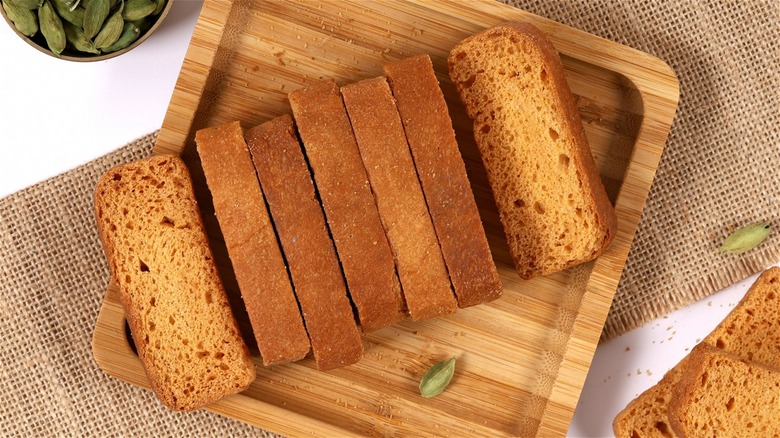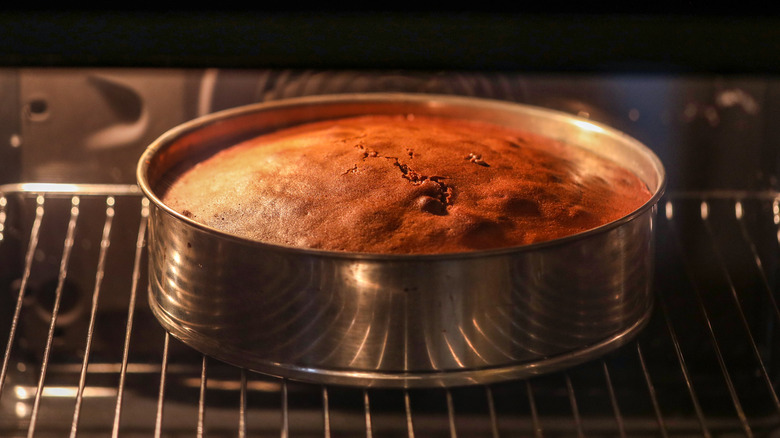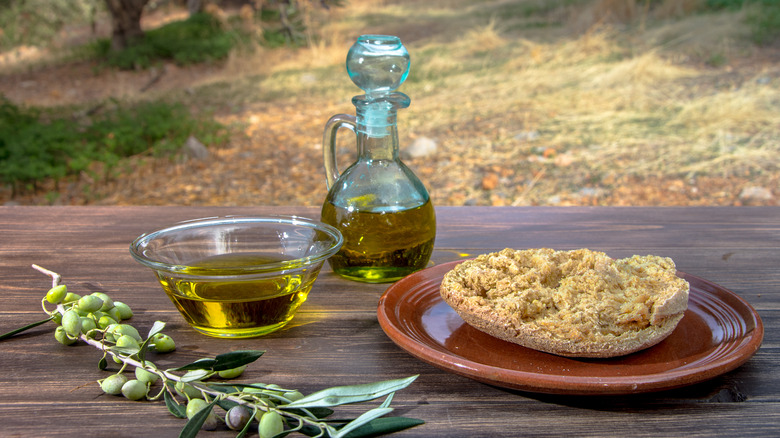Cake Rusk Is The Crunchy Snack Your Teatime Needs
Even as we get older, the delicious cookie-dunking habits we enjoy as kids have a tendency to stick with us. Instead of cookies and milk, our tastes may shift to a mug of coffee or tea with a few chocolate-laced pieces of biscotti on the side. However, there is another similarly crisp teatime snack that deserves to share the spotlight — sweet-tasting cake rusk.
Much like biscotti, cake rusk is twice-baked, but made out of cake instead of biscuit dough. Baking it twice not only gives it the right amount of crunch when dipped into coffee or tea, but also increases its shelf life. Cake rusk adds a hint of sweetness to your morning brew and melts in your mouth after you give it a dunk. These log-shaped morsels are a staple food usually eaten at afternoon tea in South Asian homes, but you can find them sold in U.S. stores. It's also not uncommon to prepare cake rusk at home since what you find in stores can often be on the stale side. Similar to a crunchy dehydrated cake, there are only a few basic ingredients to make your own version. Having cake rusk on hand will level up your next coffee break or tea-sipping experience.
How cake rusk is made
Making cake rusk at home is a straightforward process. You'll start off by following an easy yellow cake recipe and using typical ingredients like flour, butter, sugar, eggs, and baking powder. Vanilla extract is commonly added as a flavor enhancer, giving this dunkable snack its delicate, lightly sweetened flavor. Other aromatic spices like cardamon, saffron, or cinnamon can also add more depth to its overall flavor profile. For an even simpler process, cake rusk can be made with boxed vanilla cake mix to speed things along.
Once the cake finishes baking and cooling, bakers transform it into cake rusk by first slicing the cake into strips that are about an inch wide. Then they pop it back into the oven at a lower temperature, ensuring that each side bakes for 15 minutes. Once twice baked, the crunchy cake rusk is ready to be stored or dipped in coffee or chai tea.
Cake rusk is a cultural variation of rusk that is packed with more flavor and calories. Traditional rusk is twice-baked using bread instead of a sweetened sponge cake, and it's much harder to chew. It's actually common for mothers to give square-shaped pieces of rusk to babies to use as a teething snack. Little ones would no doubt enjoy chomping into a sweet bite of cake rusk too.
History and variations of cake rusk
Twice-baking bread is a preservation technique dating back to early Greece, recorded in detail by bread makers in ancient texts. By the second century, the Greeks had dubbed it paximadia, named after a Greek writer and proficient baker named Paxamus. You can enjoy olive-oil-infused paximadia with your Greek coffee or tea. This Greek twice-baked bread is said to be the origin of other types of rusk, from plain versions to sweet cake rusks. The easily preserved food also played a role during Queen Elizabeth I's reign, documented in 1595 as biscuits that were used for sailor rations on long journeys.
Across the globe, there is now a wide range of variations that have branched off from rusk's earliest form. Cake rusk, in particular, is a familiar favorite to munch on with a breakfast drink in India and Pakistan. A similarly sweet version, called zwieback, looks more like toast and is eaten in Germany and several other European countries. South African rusk sometimes has fruit, nuts, or chocolate baked in. American rusk is more likely to be found in the form of biscotti or melba toast, but making cake rusk yourself is a great way to enjoy some creative freedom.


